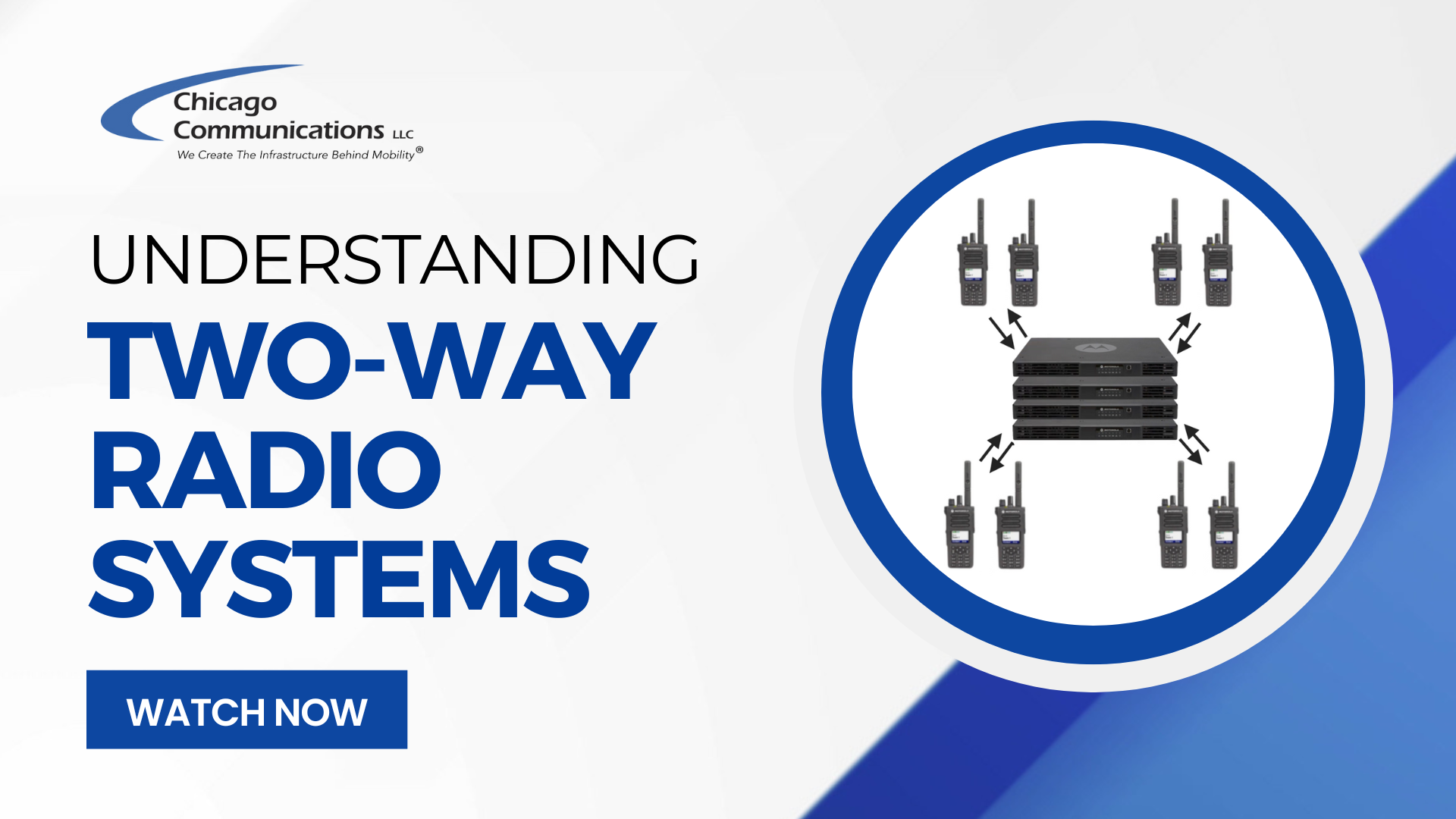When communication matters, two-way radio systems keep teams connected instantly and reliably. Whether you’re coordinating staff in a school, directing crews in the field, or managing public safety operations, two-way radios offer dependable coverage where cell service can’t.
This guide explains what a two-way radio system is, the main types available, and how to choose the right setup for your organization.
What is a Two-Way Radio System?
A two-way radio system utilizes radio frequencies to transmit and receive voice or data, enabling users to communicate instantly without relying on Wi-Fi or cellular networks. These systems are built for clear, consistent communication across distances and in challenging environments.
Two-way radios are widely used in:
-
Public safety and first responder communications
-
Education, including campus security and bus operations
-
Manufacturing and warehousing
-
Healthcare facilities
-
Construction and field service teams
Types of Two-Way Radio Systems
There are various types of two-way radio systems available.
1. Simplex Systems
Simplex systems allow direct radio-to-radio communication on a single frequency. They’re simple, efficient, and best for teams working within close range, such as schools or small facilities.

Coverage tip: Performance depends on radio power, frequency, terrain, and physical obstacles like walls or metal structures.
2. Repeater Systems
Repeater systems use additional equipment called repeaters to extend the communication range. A repeater receives and retransmits radio signals, helping to overcome distance and barriers such as buildings or hills.
 Repeater systems are especially useful in overcoming geographical obstacles and enhancing the coverage area, making them ideal for sprawling, uneven terrains.
Repeater systems are especially useful in overcoming geographical obstacles and enhancing the coverage area, making them ideal for sprawling, uneven terrains.
Best suited for: large campuses, manufacturing plants, hospitals, and municipalities that require extensive coverage.
3. Trunking Systems
Trunking systems combine multiple repeaters to create a shared network of communication channels. The system automatically assigns available channels to users, reducing wait times and preventing congestion.

Additionally, trunking systems offer enhanced functionalities like prioritizing calls, queuing calls, and automatically assigning channels. These advanced features play a crucial role in optimizing communication resources and enhancing the system's overall performance.
Best suited for: large organizations or public safety agencies that require secure, uninterrupted communication across extensive areas.
Advantages include:
-
Greater coverage area
-
More users supported at once
-
Priority and queuing options for emergency calls
Choosing the Right System
Selecting the right two-way radio system depends on your team’s size, environment, and communication range needs.
-
Simplex systems work well for short distances.
-
Repeater systems extend coverage for mid-sized areas.
-
Trunking systems provide the most capacity and control for large or complex operations.
If you’re unsure which system is best for your organization, Chicago Communications can help.
Our team designs and supports reliable Motorola two-way radio solutions tailored to your coverage area, industry, and budget. Contact us to talk with a communications expert.
Two-Way Radio Systems Frequently Asked Questions
What are the main types of two-way radio systems?
The three main types are simplex, repeater, and trunking systems. Simplex systems connect radios directly within a short range. Repeater systems utilize additional equipment to extend coverage, while trunking systems automatically manage multiple channels for large or complex networks.
How does a repeater system work?
A repeater receives a signal from one radio and retransmits it at a higher power, expanding the coverage area. This setup helps maintain clear communication in large facilities or areas with obstacles like walls or hills.
What is a trunked radio system used for?
Trunked systems are designed for organizations that require reliable communication across wide areas, such as public safety, transportation, and municipal operations. They automatically manage channels to reduce congestion and ensure critical messages are delivered efficiently.



